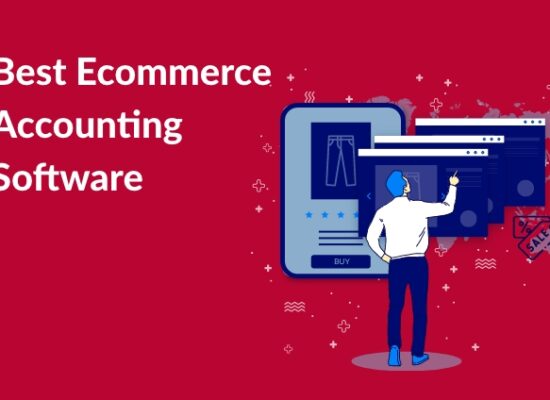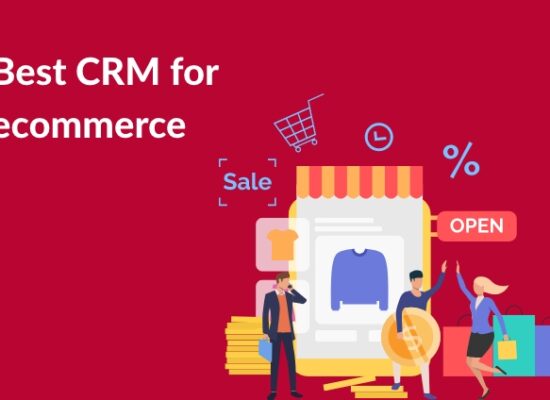- What is Dropshipping?
- Choose a Dropshipping Business Idea
- Market Research and Niche Selection
- Pros and Cons of Dropshipping
- Setting Up Your Dropshipping Business
- Choosing a Reliable Dropshipping Supplier
- Creating an Online Store or Platform
- Marketing and Promotions
- Customer Service and Order Fulfilment
- 10 Proven Tips to Succeed in Your Dropshipping Business
- The Bottom Line

Have you ever dreamed of running your own online store without the hassle of inventory management or shipping? Well, enter the world of dropshipping!
Buckle up as we explore the ins and outs of dropshipping, from finding the hottest products to mastering the art of customer satisfaction. Get ready to revolutionize your entrepreneurial journey!
What is Dropshipping?
In dropshipping, you don’t have to keep the inventory for the goods and services you’re going to sell. Rather, when a customer places an order, you buy it directly from a third party and ship it straight to the buyer.
For example, a company that sells phone accessories online but doesn’t keep the merchandise in stock. When a client places an order, the company buys the product directly from a supplier and ships it to the client. Your overhead expenses and inventory management issues are decreased.
Choose a Dropshipping Business Idea
The first and foremost step while thinking of launching a dropshipping business is choosing an absolute business idea. Choosing a successful niche and products to sell without keeping inventory are essential components of coming up with a dropshipping company plan.
Let’s take the fitness niche, for example. Due to their adaptability and popularity in at-home workouts, resistance bands may be in demand after studying consumer preferences and market trends.
To draw in new clients, make strategic marketing campaigns. Your suppliers take care of the packing and delivery of orders that are placed on your website straight to your clients. With this model, you may minimize initial expenditures and logistical issues and concentrate on growing your brand and product line.
Read More: 10 Best Dropshipping Business Ideas
Market Research and Niche Selection
Identifying Profitable Niches
To maximize profits, look for niches with minimal competition and high demand. Start by looking for well-liked products on social media and ecommerce websites.
To find new trends and customer preferences, use resources like social media analytics, Amazon Best Sellers, and Google Trends. Targeting specialised audiences with certain demands or interests is another thing to think about.
Analyse the competition in each specialty to see how saturated the market is and how well you can differentiate yourself. In the end, choosing a niche that works requires a blend of trend analysis, market research, and target audience comprehension.
Read More: 10 Best Dropshipping Products to Get Maximum Profit
Analyzing Market Trends and Demand
Start by investigating current trends in a range of markets and specialisations. Seek for goods that are becoming more and more popular or that are consistently in demand. To find new trends and customer preferences, use online resources and tools like industry studies, social media analytics, and Google Trends.
Continue to be flexible and sensitive to shifting market conditions by keeping a close eye on trends and customer behaviour. To be competitive in the dropshipping industry, keep refining your marketing techniques and product selection through ongoing analysis of data and feedback.
Competition Analysis
A thorough examination of your competitors is necessary if you want your dropshipping business to succeed. Evaluate their products, charging tactics, delivery schedules, and customer assistance.
Seek out chances to set yourself apart from other businesses. This could entail giving distinctive products, expedited shipping, or top-notch client support. Determine the holes in the market that your competitors aren’t filling and where you can bring value.
Read More: Best Dropshipping Websites to Skyrocket Your Online Business
Pros and Cons of Dropshipping
| Pros of Dropshipping | Cons Dropshipping |
| The expenses of starting a dropshipping business are very less as compared to a typical retail business. | Your margins are smaller because you’re essentially serving as an intermediary. |
| You have the freedom to operate from any location with an internet connection. | You don’t have direct control over the shipping procedure, so there is a chance that there can be delays, damaged goods, or misplaced parcels. |
| Dropshipping eliminates the need for inventory tracking, storage, and stock level management. | In case of any conflicts with your providers, your client satisfaction and business reputation might get affected. |
| With dropshipping, you may provide your clients with an extensive range of products without being limited by physical inventory. | Dropshipping has become so popular that finding successful products and making a name for yourself might be difficult. |
| Dropshipping companies can swiftly expand to meet rising demand because they are not constrained by inventory or warehouse space. | It is difficult to build an authentic brand identity in case you’re dealing with items from different suppliers. |
Setting Up Your Dropshipping Business
Legal Considerations and Business Registration
Business Structure: Select a business entity that best fits your needs such as a corporation, LLC (Limited Liability Company), partnership, or sole proprietorship.
Business Name: Give your dropshipping company a distinctive and memorable name.
Business Registration: Your company should be registered with the government agencies. Usually, this involves submitting documentation to your state or local government in order to acquire the required licenses and permits.
Tax Obligations: Recognize your responsibilities with regard to income tax, sales tax, and any other applicable taxes as a business owner.
Supplier Agreements: Create formal contracts outlining the terms and conditions of your business partnership such as price, product quality, shipping schedules, and dispute resolution procedures with your dropshipping suppliers.
Customer Agreements: Draft terms and conditions of sale, covering shipping, refunds, returns, and privacy for your clients.
Intellectual Property: When purchasing goods for your dropshipping company, keep intellectual property concerns in mind.
Data Protection: Put safeguards in place to safeguard client information and adhere to laws governing data protection.
Legal Compliance: Keep up with pertinent laws and rules such as those pertaining to e-commerce, consumer protection, and advertising that may have an impact on your dropshipping operation.
Insurance: You should think about getting insurance for your dropshipping company. Insurance can offer defense against unforeseen circumstances and legal actions.
Choosing a Reliable Dropshipping Supplier
Reliability and Reputation: Find out about the reputation of the supplier. Seek feedback from other dropshippers or companies that have collaborated with them.
Quality of items: Evaluate the supplier’s items’ quality. Whenever feasible, ask for samples so you can assess the quality directly.
Shipment Times and Costs: Quick and reasonably priced shipping is essential for keeping customers happy.
Inventory Management: To avoid overselling or backorders, a trustworthy supplier should have precise inventory counts and real-time stock level updates.
Terms and Conditions: Before partnership, carefully read the terms and conditions provided by the supplier.
Creating an Online Store or Platform

Select an Online Platform: Choose an ecommerce platform based on your needs. Shopify, Magento, Squarespace, WooCommerce (for WordPress), and are popular choices.
Register a Domain Name: Pick a domain name that aligns with your brand. To register your domain name, you can use Namecheap, GoDaddy etc.
Choose best Hosting: Select a best hosting provider that suits your website’s needs. Popular options include Namecheap, Hostinger, Fastcomet and Bluehost.
Design Your Online Store: Make your online store’s design unique to provide an aesthetically pleasing and intuitive customer experience.
Create Policies and Terms of Service: Create terms of service and policies for your online store including terms of use, privacy statement, return and refund guidelines, and shipping regulations.
Launch and Promote Your Store: After setting up your internet store, make it public and begin advertising it to draw clients.
Marketing and Promotions
Utilizing Social Media Marketing
With social media marketing, dropshipping businesses may utilise Facebook, Instagram, Pinterest, and other sites. Driving engagement and creating interest requires creating visually stunning content that highlights benefits, shows off products in use, and connects with the target audience.
A dropshipping company may develop a strong online presence, answer customer concerns, and establish trust by continuously monitoring and reacting to messages, comments, and feedback. This will eventually increase sales and create enduring customer connections.
Search Engine Optimization Techniques
An essential component of every dropshipping company’s success is search engine optimization (SEO), which increases website visibility, generates organic traffic, and increases conversions. Using keywords in headings, meta tags, and product descriptions are essential SEO strategies for dropshipping companies.
Furthermore, producing original, high-quality content for your website, such as blog entries, tutorials, and product reviews, enhances its authority and trustworthiness with search engines while also benefiting users.
Email Marketing Campaigns
For a dropshipping company, email marketing campaigns can be an effective means of increasing revenue and cultivating client loyalty. You can deliver relevant and personalised material straight to the mailbox of subscribers who are interested in your items by creating a targeted email list of them.
To properly customise your emails after you have a subscriber base, divide your list according to demographics, past purchases, or degree of participation. Send out newsletters on a regular basis that highlight sales, new products, or informative articles like instructions or product guides.
Customer Service and Order Fulfilment
Providing Excellent Customer Service
Make sure there are quick answers to questions, clear shipping and return policies, and simple problem solving. If you want to reduce returns, give excellent products and precise descriptions top priority.
Simplify order processing to ensure prompt delivery. Customise communications and get input to make improvements. Satisfied customers are more likely to be loyal, which promotes long-term success in the dropshipping market.
Handling Returns and Refunds
Refunds and returns must be handled quickly in dropshipping in order to keep customers happy. Establish a return policy that is simple to understand and has easy-to-follow guidelines.
Respond quickly to client questions and concerns by offering attentive customer service. Putting a high priority on a smooth return and refund process can help you gain consumers’ trust and improve the standing of your dropshipping company.
Ensuring Smooth Order Fulfilment
Maintaining client happiness in dropshipping requires efficient order fulfilment. Make sure your order fulfilment process is optimised to guarantee accurate and timely order fulfilment. Software for inventory management can be used to monitor stock levels and stop overselling.
To reduce delays, maintain solid relationships with dependable suppliers. Give clients up-to-date shipment information and clear communication, along with order tracking details. You may build client loyalty and trust by putting a high priority on efficient order delivery.
10 Proven Tips to Succeed in Your Dropshipping Business
- To differentiate yourself, pick a niche with less competition and strong demand.
- To effectively customise your offerings, learn about the tastes, habits, and pain points of your target audience.
- Assist dependable suppliers who provide high-calibre goods and prompt delivery.
- Design an intuitive, eye-catching website with simple navigation and concise product descriptions.
- To reach your audience use a variety of marketing channels including influencer collaborations, social media, email marketing, and PPC advertising.
- To improve visibility and draw in organic traffic, optimise your website for search engines.
- Deliver first-rate customer care including prompt response times and hassle-free returns to foster trust and loyalty.
- To remain competitive, stay updated on market developments and be prepared to modify your plans as necessary.
- To make data-driven decisions, monitor website traffic, conversion rates, and customer behaviour using analytics tools.
- To improve your strategy over time, stay up to date on the latest e-commerce trends, dropshipping best practices, and digital marketing strategies.
The Bottom Line
Dropshipping demands careful strategy and execution. Concentrate on creating a distinctive brand identity with compelling content and successful multi platform marketing techniques.
In order to sustain profitability, don’t forget to handle your money sensibly and pay careful attention to your costs and income. You may succeed with your dropshipping business if you are committed, adaptable, and persistent.
FAQ’s
How can I locate dropshipping suppliers?
Dropshipping suppliers can be located via internet directories, direct communication with manufacturers, trade exhibitions, or dropshipping marketplaces such as Oberlo or AliExpress.
Which platforms are available for setting up a dropshipping store?
The most widely used platforms for creating dropshipping stores are BigCommerce, Magento, WooCommerce (with add-ons like AliDropship), and Shopify.
Is dropshipping a viable way for me to earn a living?
Indeed, dropshipping has helped many people launch profitable full-time companies but it also calls for commitment, smart marketing, and ongoing store and product optimization.
Which niches make money with dropshipping?
Products related to health and fitness, cosmetics and skincare, technology and gadgets, fashion accessories, and home decor are all lucrative dropshipping categories.
How can I promote my dropshipping store?
Your dropshipping store can be promoted via influencer relationships, paid advertising such as Google Ads, content marketing, email marketing, search engine optimization (SEO), and social media advertising.



